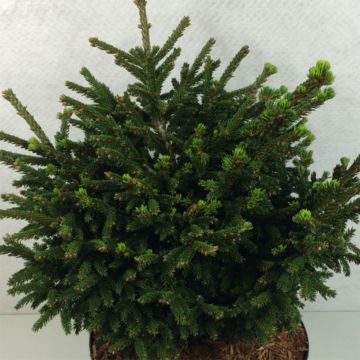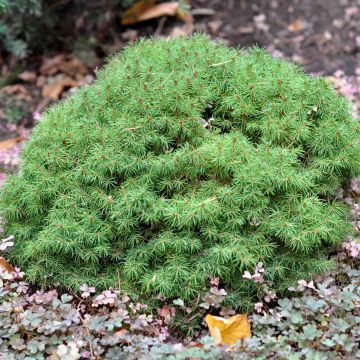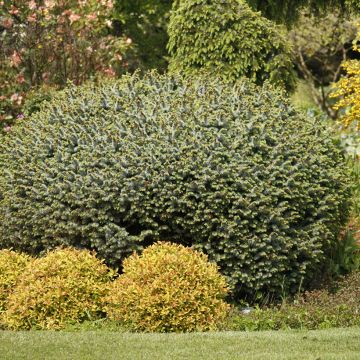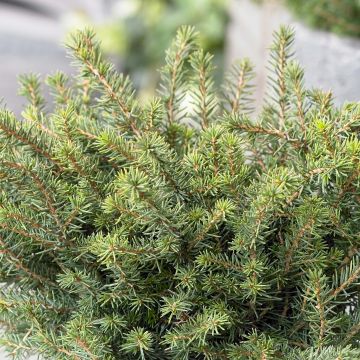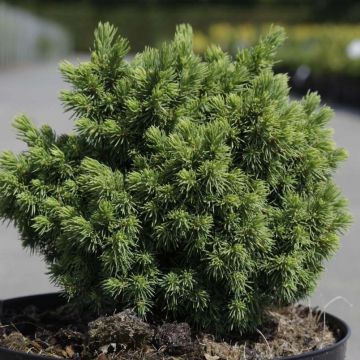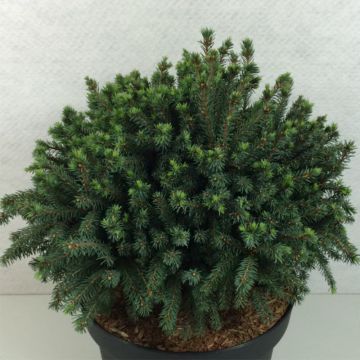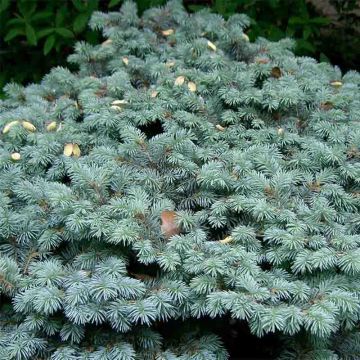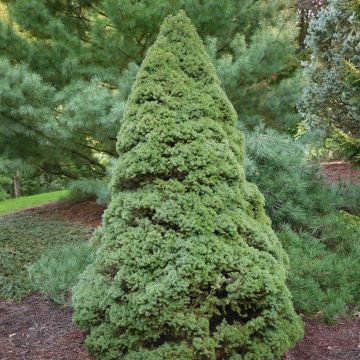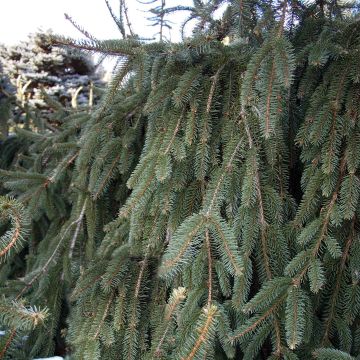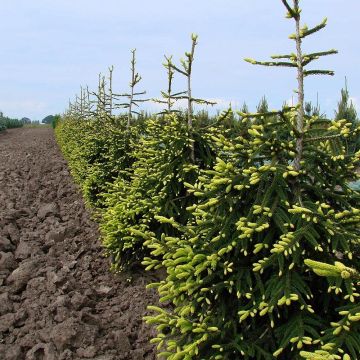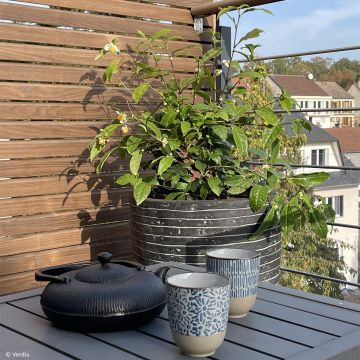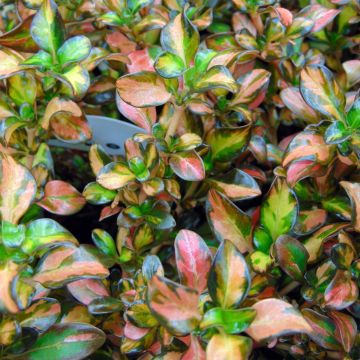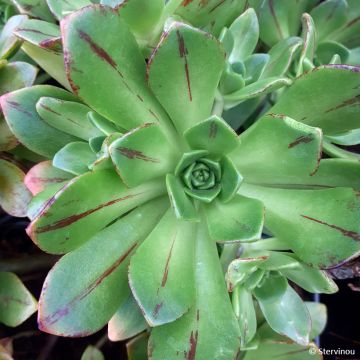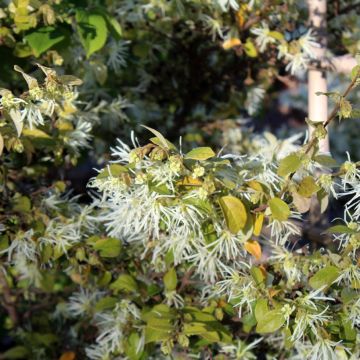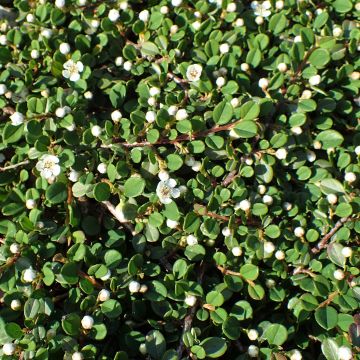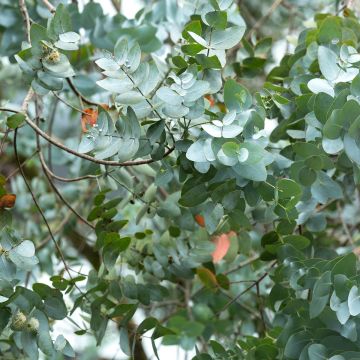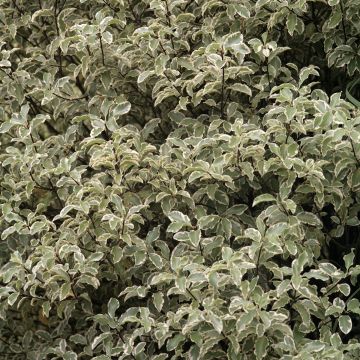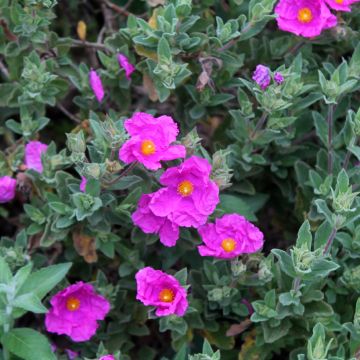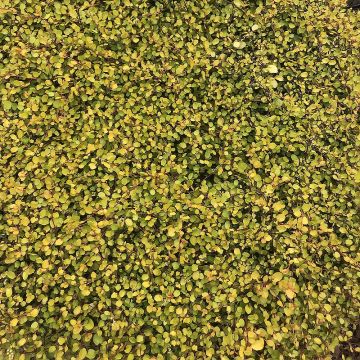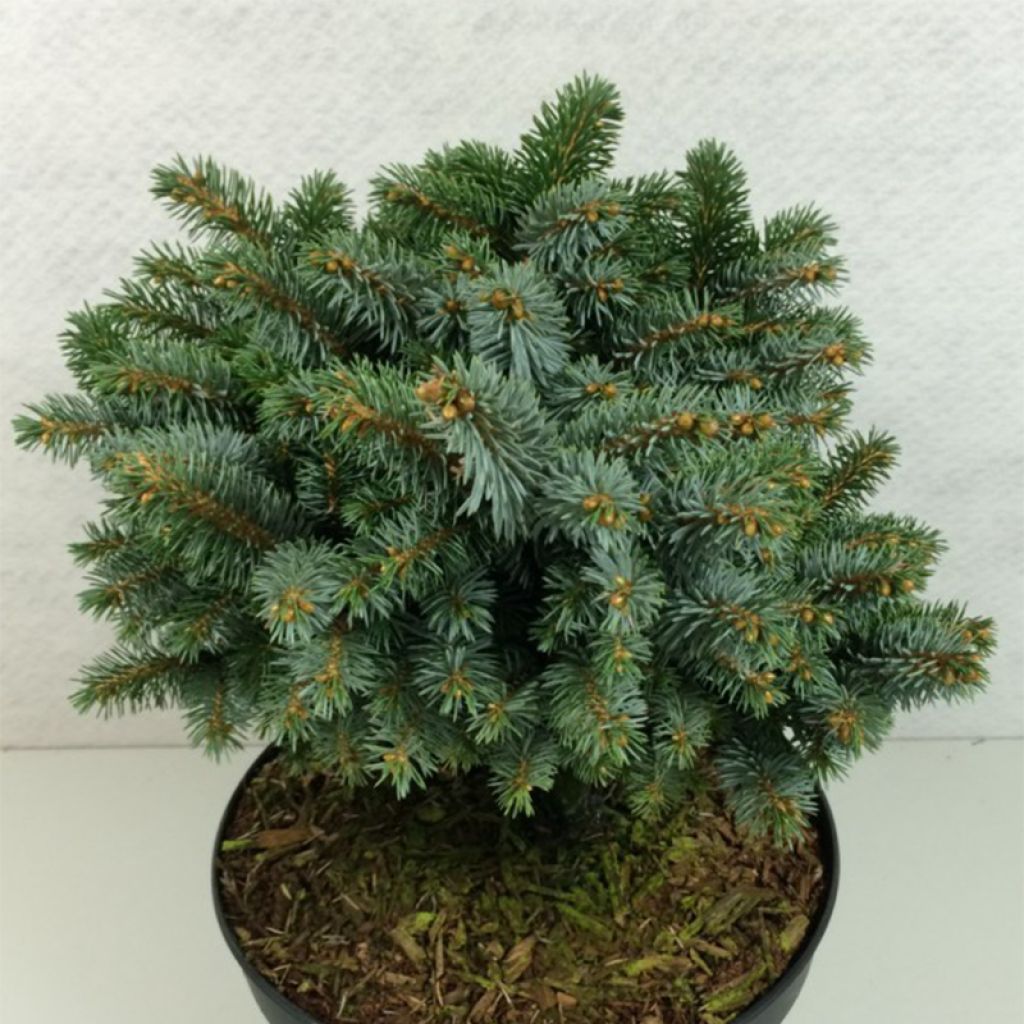

Picea sitchensis Rom - Epicea de Sitka
Picea sitchensis Rom - Sitka Spruce
Picea sitchensis Rom
Sitka Spruce
This plant carries a 24 months recovery warranty
More information
We guarantee the quality of our plants for a full growing cycle, and will replace at our expense any plant that fails to recover under normal climatic and planting conditions.
From €5.90 for pickup delivery and €6.90 for home delivery
Express home delivery from €8.90.
Does this plant fit my garden?
Set up your Plantfit profile →
Description
Forming a lovely rounded bush, the Picea sitchensis 'Rom' is a dwarf form of the Sitka spruce, with very slow growth it is ideal for small spaces. In spring, it is covered with young blue-silver shoots that form a beautiful contrast with the older, green-blue foliage. Its branches are like small upright brushes with a fairly light appearance and regularly arranged, like in a big bouquet. Its silhouette fits well in small gardens, enlivens large rockeries, and works wonders in pots on the terrace. It is a very hardy, undemanding small conifer that does not require pruning. It is content with well-drained but moist, ordinary soil, and a sunny exposure.
The Picea sitchensis, also called Sitka spruce, is a plant of the pinaceae family native to the west coast of the United States, named for Sitka, in Alaska. It is a very hardy species, accustomed to cold climates, humid in summer. In its natural, harsh environment, this fast-growing tree exceeds 40 m (131 ft 2 in) in height and shows a pyramidal habit with a widening crown and whorled branches. This spruce is one of the few that can be transplanted at a young age. It is very tolerant of soil pH.
The 'Rom' variety is rare in gardens and stands out for its very small size and dense, bushy habit. This bush forms a round cushion with regular and bushy vegetation. Its growth is very slow, about 5 cm (2 in) per year. A 10-year-old specimen will not exceed 50 cm (19.7 in) in all directions. Eventually, it will measure from 80 cm (31.5 in) to 1 m (3 ft 4 in) in all directions. It produces thin, stiff branches which are very tightly packed and directed upwards. They are covered with fine, flat and stiff needles, radially arranged around the branches. They are blue-grey-silver in spring, then become green-blue over the seasons.
The dwarf Sitka spruce 'Rom' deserves to be better known and planted in gardens, even the smallest ones. With its easy cultivation in cool climates, its personality, and its very reduced development, it is a perfect plant for rockeries, flower beds, and terraces. This plant goes well with large stones, geometric lines, and brickwork. It can be associated with dwarf conifers with a prostrate(Juniperus horizontalis Blue Chip), round or columnar habit. The architectural qualities of conifers naturally impose themselves in the design of a contemporary garden, which prefers the aesthetics of shapes, silhouettes, and textures to flowers. These plants structurally define a flower bed, mark the pathways and border the terrace, easily replacing the strong presence of trimmed boxwood or holly. They go well with heathers, shrubby salvias, complementary grasses, or ground cover plants such as aubrietas and cerastiums, as well as light-flowered shrubs like gauras. The key is to play with volumes and colours.
Report an error about the product description
Picea sitchensis Rom - Sitka Spruce in pictures
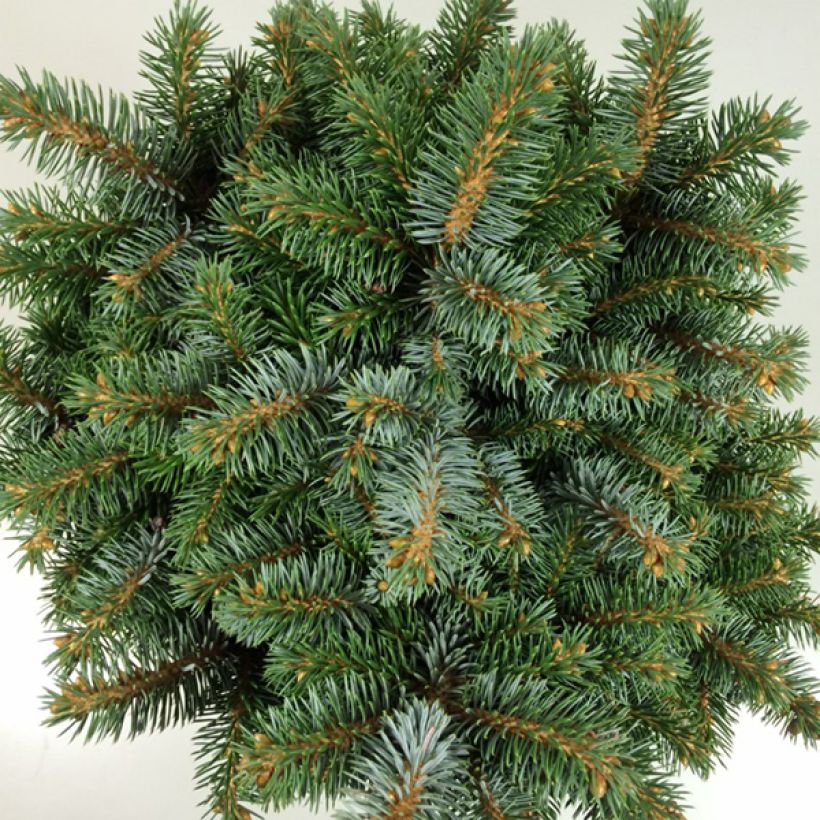

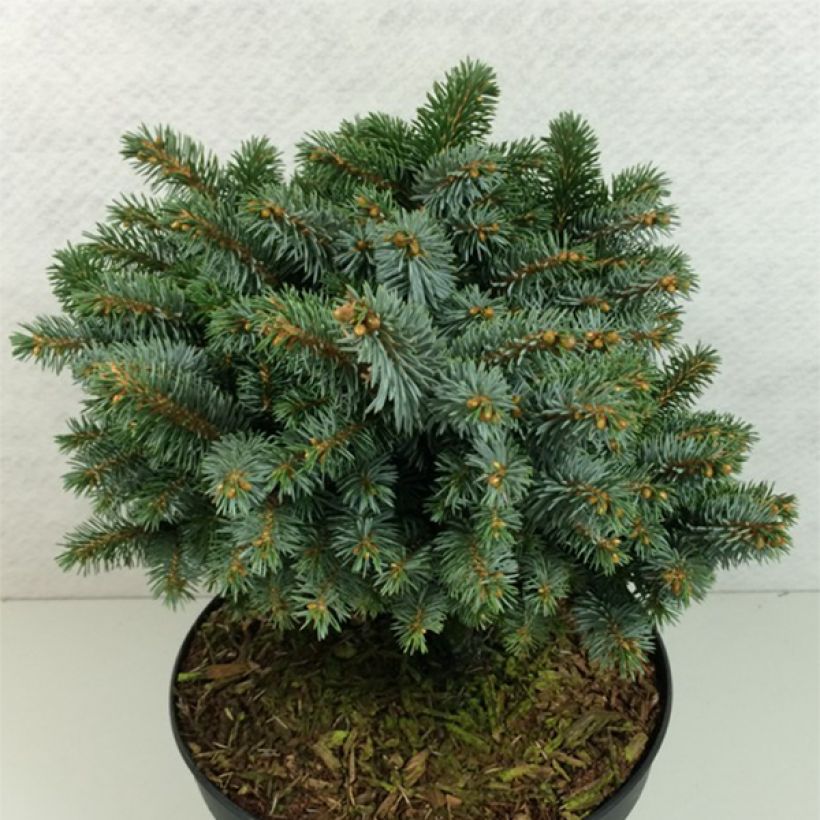

Plant habit
Foliage
Botanical data
Picea
sitchensis
Rom
Pinaceae
Sitka Spruce
Cultivar or hybrid
Other Picea
Planting and care
The Picea sitchensis 'Rom' is best planted from September to November and from February to June in ordinary, well-drained, moist to wet, rather fertile, even slightly chalky, neutral or acidic soil. A sandy, humus-rich or loamy soil will be perfectly suitable. Choose a sunny location or, at most, semi-shaded. This variety is resistant to wind. Soak the root ball well before planting. Add organic fertilizer at planting and water generously in the first years, and in case of prolonged drought. Apply a special conifer fertilizer every year in April and weed the soil in summer. This very hardy conifer (down to -30°C (-22 °F) at least) tolerates salty soils but dislikes heat and drought. Pruning is not necessary.
Planting period
Intended location
Care
This item has not been reviewed yet - be the first to leave a review about it.
Evergreen shrubs
Haven't found what you were looking for?
Hardiness is the lowest winter temperature a plant can endure without suffering serious damage or even dying. However, hardiness is affected by location (a sheltered area, such as a patio), protection (winter cover) and soil type (hardiness is improved by well-drained soil).

Photo Sharing Terms & Conditions
In order to encourage gardeners to interact and share their experiences, Promesse de fleurs offers various media enabling content to be uploaded onto its Site - in particular via the ‘Photo sharing’ module.
The User agrees to refrain from:
- Posting any content that is illegal, prejudicial, insulting, racist, inciteful to hatred, revisionist, contrary to public decency, that infringes on privacy or on the privacy rights of third parties, in particular the publicity rights of persons and goods, intellectual property rights, or the right to privacy.
- Submitting content on behalf of a third party;
- Impersonate the identity of a third party and/or publish any personal information about a third party;
In general, the User undertakes to refrain from any unethical behaviour.
All Content (in particular text, comments, files, images, photos, videos, creative works, etc.), which may be subject to property or intellectual property rights, image or other private rights, shall remain the property of the User, subject to the limited rights granted by the terms of the licence granted by Promesse de fleurs as stated below. Users are at liberty to publish or not to publish such Content on the Site, notably via the ‘Photo Sharing’ facility, and accept that this Content shall be made public and freely accessible, notably on the Internet.
Users further acknowledge, undertake to have ,and guarantee that they hold all necessary rights and permissions to publish such material on the Site, in particular with regard to the legislation in force pertaining to any privacy, property, intellectual property, image, or contractual rights, or rights of any other nature. By publishing such Content on the Site, Users acknowledge accepting full liability as publishers of the Content within the meaning of the law, and grant Promesse de fleurs, free of charge, an inclusive, worldwide licence for the said Content for the entire duration of its publication, including all reproduction, representation, up/downloading, displaying, performing, transmission, and storage rights.
Users also grant permission for their name to be linked to the Content and accept that this link may not always be made available.
By engaging in posting material, Users consent to their Content becoming automatically accessible on the Internet, in particular on other sites and/or blogs and/or web pages of the Promesse de fleurs site, including in particular social pages and the Promesse de fleurs catalogue.
Users may secure the removal of entrusted content free of charge by issuing a simple request via our contact form.
The flowering period indicated on our website applies to countries and regions located in USDA zone 8 (France, the United Kingdom, Ireland, the Netherlands, etc.)
It will vary according to where you live:
- In zones 9 to 10 (Italy, Spain, Greece, etc.), flowering will occur about 2 to 4 weeks earlier.
- In zones 6 to 7 (Germany, Poland, Slovenia, and lower mountainous regions), flowering will be delayed by 2 to 3 weeks.
- In zone 5 (Central Europe, Scandinavia), blooming will be delayed by 3 to 5 weeks.
In temperate climates, pruning of spring-flowering shrubs (forsythia, spireas, etc.) should be done just after flowering.
Pruning of summer-flowering shrubs (Indian Lilac, Perovskia, etc.) can be done in winter or spring.
In cold regions as well as with frost-sensitive plants, avoid pruning too early when severe frosts may still occur.
The planting period indicated on our website applies to countries and regions located in USDA zone 8 (France, United Kingdom, Ireland, Netherlands).
It will vary according to where you live:
- In Mediterranean zones (Marseille, Madrid, Milan, etc.), autumn and winter are the best planting periods.
- In continental zones (Strasbourg, Munich, Vienna, etc.), delay planting by 2 to 3 weeks in spring and bring it forward by 2 to 4 weeks in autumn.
- In mountainous regions (the Alps, Pyrenees, Carpathians, etc.), it is best to plant in late spring (May-June) or late summer (August-September).
The harvesting period indicated on our website applies to countries and regions in USDA zone 8 (France, England, Ireland, the Netherlands).
In colder areas (Scandinavia, Poland, Austria...) fruit and vegetable harvests are likely to be delayed by 3-4 weeks.
In warmer areas (Italy, Spain, Greece, etc.), harvesting will probably take place earlier, depending on weather conditions.
The sowing periods indicated on our website apply to countries and regions within USDA Zone 8 (France, UK, Ireland, Netherlands).
In colder areas (Scandinavia, Poland, Austria...), delay any outdoor sowing by 3-4 weeks, or sow under glass.
In warmer climes (Italy, Spain, Greece, etc.), bring outdoor sowing forward by a few weeks.

































